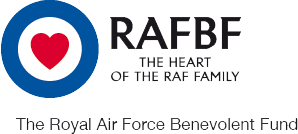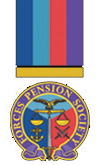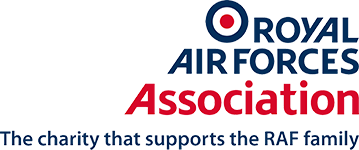Some (most) elements will not work without it!
Useful and Interesting Links

RAF Air Defence Radar Museum
The museum, which is located on the site of the world’s longest continuously operating radar site, provides a unique window into the history of radar and is a great day out in Norfolk, for all the family. The museum is located at Neatishead, close to Horning and the Broads.

Bawdsey Radar
The Transmitter Block on the Bawdsey Manor Estate is part of the world’s first operational RADAR station (RAF Bawdsey 1937 to 1991). Bawdsey Radar Trust, formed in 2003 as the Bawdsey Radar Group, obtained a grant from the Heritage Lottery Fund following the Transmitter Block's appearance in the BBC2 Restoration programme in 2004. Today it is open to visitors and houses an exhibition explaining the development of radar and recording the central role that Bawdsey played in saving our country during the Battle of Britain.

Subterranea Britannica Cold War
Formed in 1974, Subterranea Britannica is a society devoted to the study and investigation of man-made and man-used underground places. The Cold War section (to which this link takes you) provides a good historical record of inter alia Boulmer and the various items of equipment used there over the years.

ASACS Force Command - RAF Boulmer
www.raf.mod.uk/.../raf-boulmer
Homeland defence of the UK, particularly against the potential terrorist aircraft threat, remains the cornerstone of the ASACS Force Command’s operational output. However, the ASACS Force Command also has a wider responsibility in support of deployed operations worldwide. With the stand-up of the ASACS Force Command Headqurters at RAF Boulmer in January 2006, the Station Commander also has the operational role of ASACS Force Commander responsible for the generation, sustainment and operational output of the ASACS organisation.

BMEWS - RAF Fylingdales
www.raf.mod.uk/.../raf-fylingdales
RAF Fylingdales is a small Unit on the North Yorkshire Moors and was first declared operational in 1963 as one of 3 radar sites in the Ballistic Missile Early Warning System (BMEWS); the other 2 sites being in Alaska and Greenland. The Station badge appropriately shows the White Rose of York surmounted by a Viking Fire Warning Basket. In ancient times these baskets could be found all along the East coast of England, mounted on vantage points such as church towers and hilltops. They were lit as soon as invading forces were sighted out at sea so that the local population could be warned of attack. The Fylingdales motto 'Vigilamus' translated means, 'We are Watching'.

The Radar Pages
'The Radar Pages' is dedicated to preserving the memory of RAF air defence radar personnel and equipment. The web site attempts to capture the esprit de corps of RAF radar past and present and presents a catalogue of RAF equipment from the earliest days to the present. The site includes a Radar Theory section for educational purposes and oral history, a growing archive of anecdotal accounts of RAF radar-orientated life experiences. The web site is also designed to provide a one-stop source for researchers, historians and casual enquirers seeking information about RAF radar, personnel and equipment. To aid this aim there are comprehensive lists of contact addresses, web sites and reading references.

The RAF Benevolent Fund
The Royal Air Force Benevolent Fund exists to provide assistance to those of the extended Royal Air Force Family who need support as a consequence of poverty, sickness, disability, accident, infirmity or other adversity.
This extended family embraces all ranks, male and female, who are serving or have served in the Royal Air Force or its associated Air Forces, their widows, widowers and dependants.

The Forces Pension Society
The Forces Pension Society exists to ensure that serving and retired members of the Armed Forces, their widows, widowers, surviving partners, civil partners and dependants receive the pension to which they are entitled and which they deserve.
As a not-for-profit organisation, we value our independence, which gives us the freedom to campaign objectively on behalf of our members and of members of the Armed Forces generally.

The Royal Air Forces Association
The RAF Association (RAFA) is a membership organisation of serving and former members of the Royal Air Force, their families and dependants and all those supporting the aims of the Association. It is the largest single-service membership organisation in the United Kingdom and has roughly 80,000 members and 500 Branches in the UK, Europe and further afield.

The Service Personnel and Veterans Agency
The Service Personnel and Veterans Agency (SPVA) is now named Veterans UK and provides pay, pension and support services to both Military Personnel and the Veterans Community. For the first time, the MOD is able to deliver through-life service support functions direct to around 900,000 personnel. SPVA is currently situated over four sites from Glasgow in the north to Gosport on the south coast. The SPVA is a tri-service organisation.

Saint Clement Danes - Central Church of the Royal Air Force
www.raf.mod.uk/.../st-clement-danes-church
St Clement Danes is the Central Church of the Royal Air Force. The original Wren building was badly damaged by enemy action in 1941. It was rebuilt by the Royal Air Force in 1958 to become its spiritual heart. It is a living church prayed in daily and visited throughout the year by thousands seeking solace and reflection.

RAF Register of Associations
www.associations.rafinfo.org.uk
The Royal Air Forces Register of Associations is here to help you to find the RAF-related Association you are seeking. It was 207 Squadron Association's President, the late Air Vice Marshal David Dick, who - with others - published the first consolidated list of Squadron Associations in the Autumn 1993 issue of INTERCOM, the Aircrew Association magazine. This Register, originally named the British and Commonwealth Air Unit Register (BCAUR), continued that tradition of service with the hope that the Internet might make the information available to a potentially wider audience. There are sections dealing with US Army Air Forces in WWII and present day international military links. Information is welcome on Associations for Royal Auxiliary Air Force Squadrons (including Balloon Squadrons) and RAF Regiment Squadrons.

The Lightning Preservation Group
The Lightning Preservation Group (LPG) is made up of a group of enthusiasts, based at Bruntingthorpe airfield near Leicester, who are dedicated to maintaining two of the last few remaining English Electric LIGHTNING aircraft in airworthy condition.

The Combined Military Services Museum
The Combined Military Services Museum allows you to experience a journey through British military history, beginning on brutal medieval battlefields, through the Crimean and Napoleonic Wars, into WW1 and WW2, right up to today’s conflicts.

The Radar Rooms
A former WWII GCI Radar Station, 1941-1958, located in St. Brides Bay, within the spectacular Pembrokeshire Coast National Park. This very special WWiI site has been sympathetically restored by its owner John Dixon, now an honorary member of the RAF FCA. John has extensively researched the history of this site and offers his visitors a captivating guided tour and presentation. The perfect 1940's retreat, it has fascinating heritage rooms alongside two unique 1940's luxurious holiday apartments, all displaying a stunning private collection of GAvA art.

Marconi Radar
marconiradarhistory.pbworks.com
The name Marconi has been associated with the concept of detection of objects by reflection of radio waves since the earliest experiments of Guglielmo Marconi himself; he speculated in a lecture in 1922 that by the design of suitable equipment the presence of ships could be revealed in fog or thick weather.
When the Company was closed a group of colleagues got together to preserve a record of how the British companies which came together under the Marconi banner translated these early ideas, from both government sponsored research and private venture work, into the world's most successful ranges of equipment to provide the service of RADAR. The earliest equipment, developed in a remarkably short timescale, played a vital role in both defence and offence during the second World War......